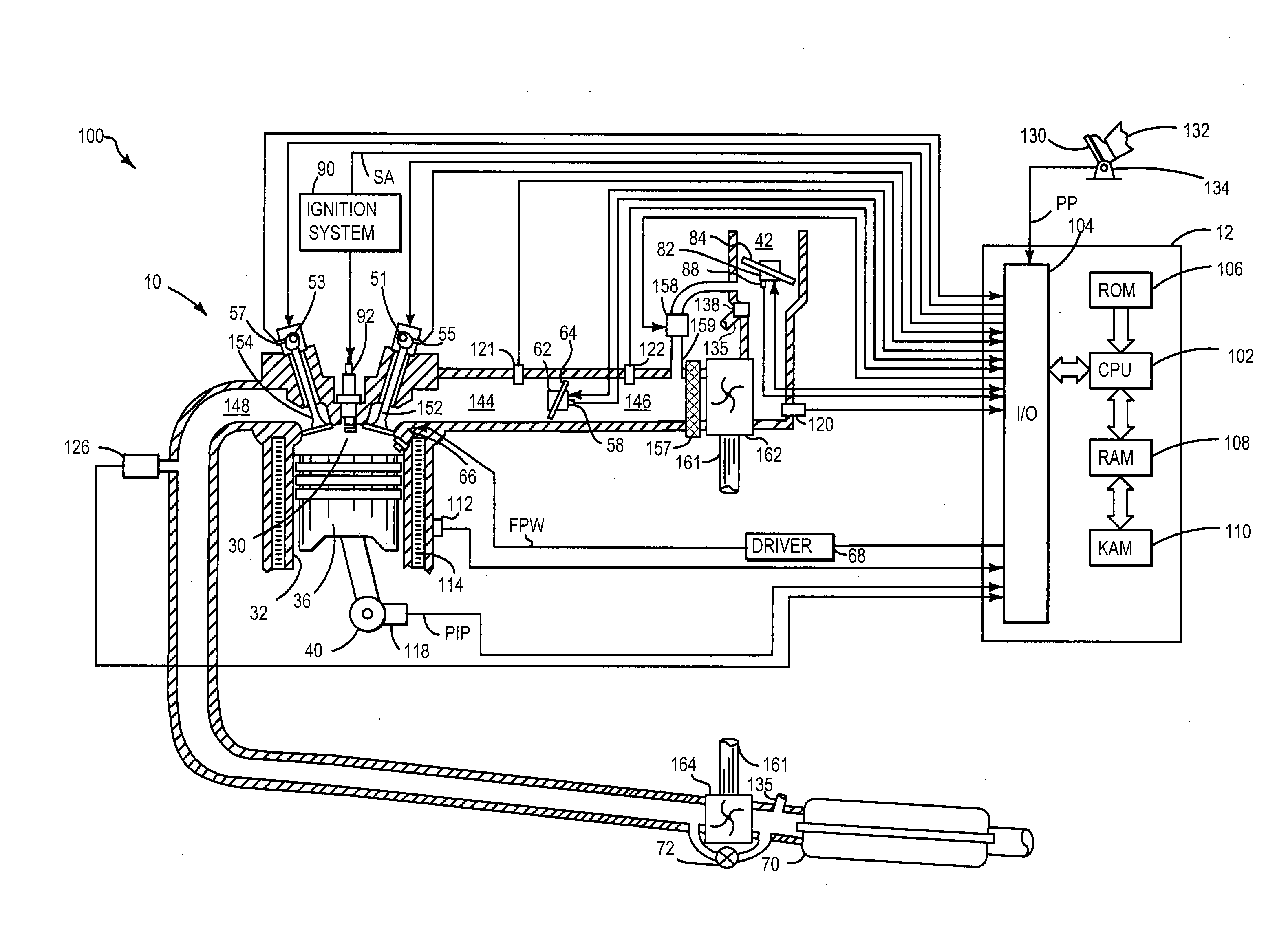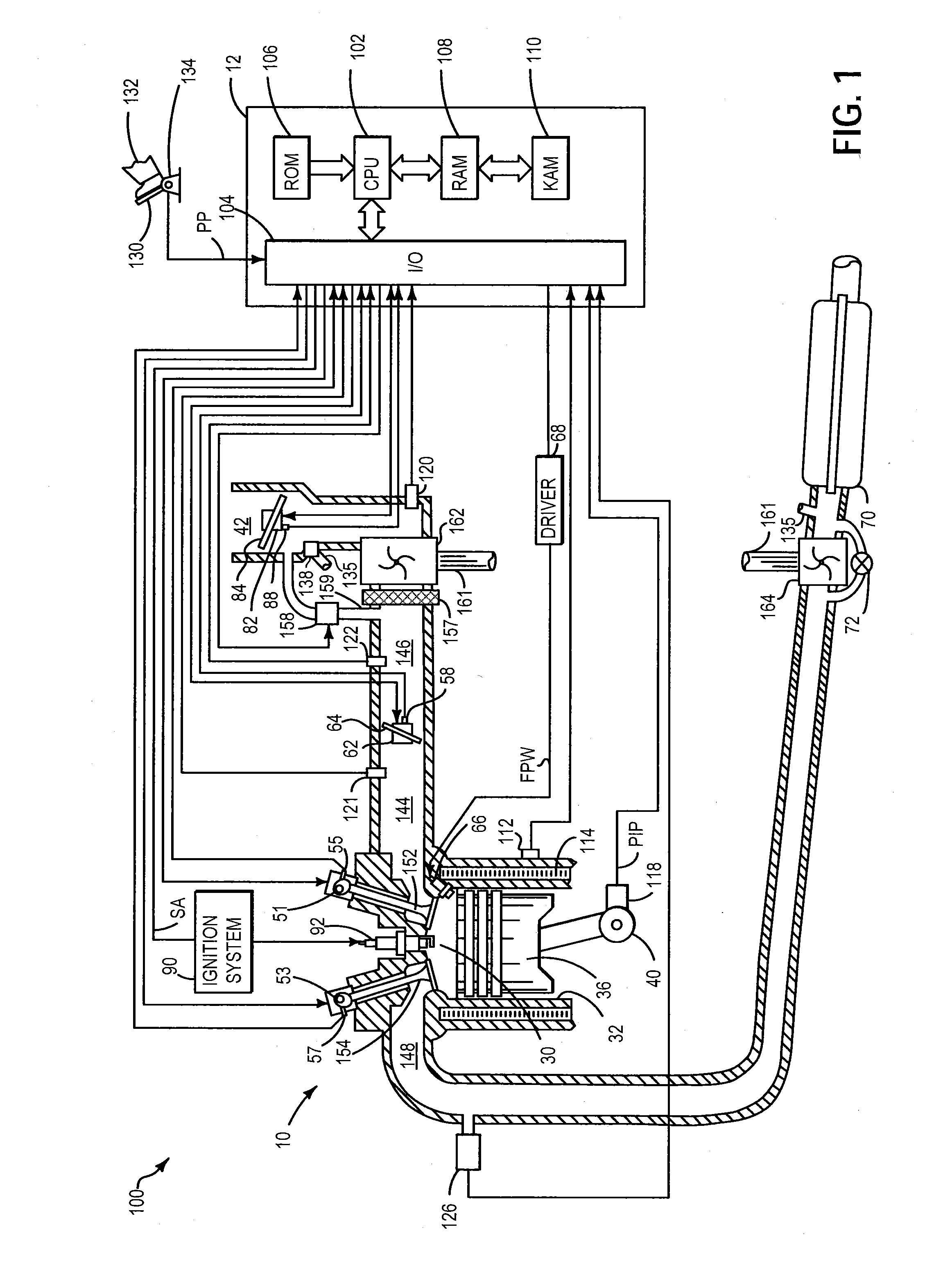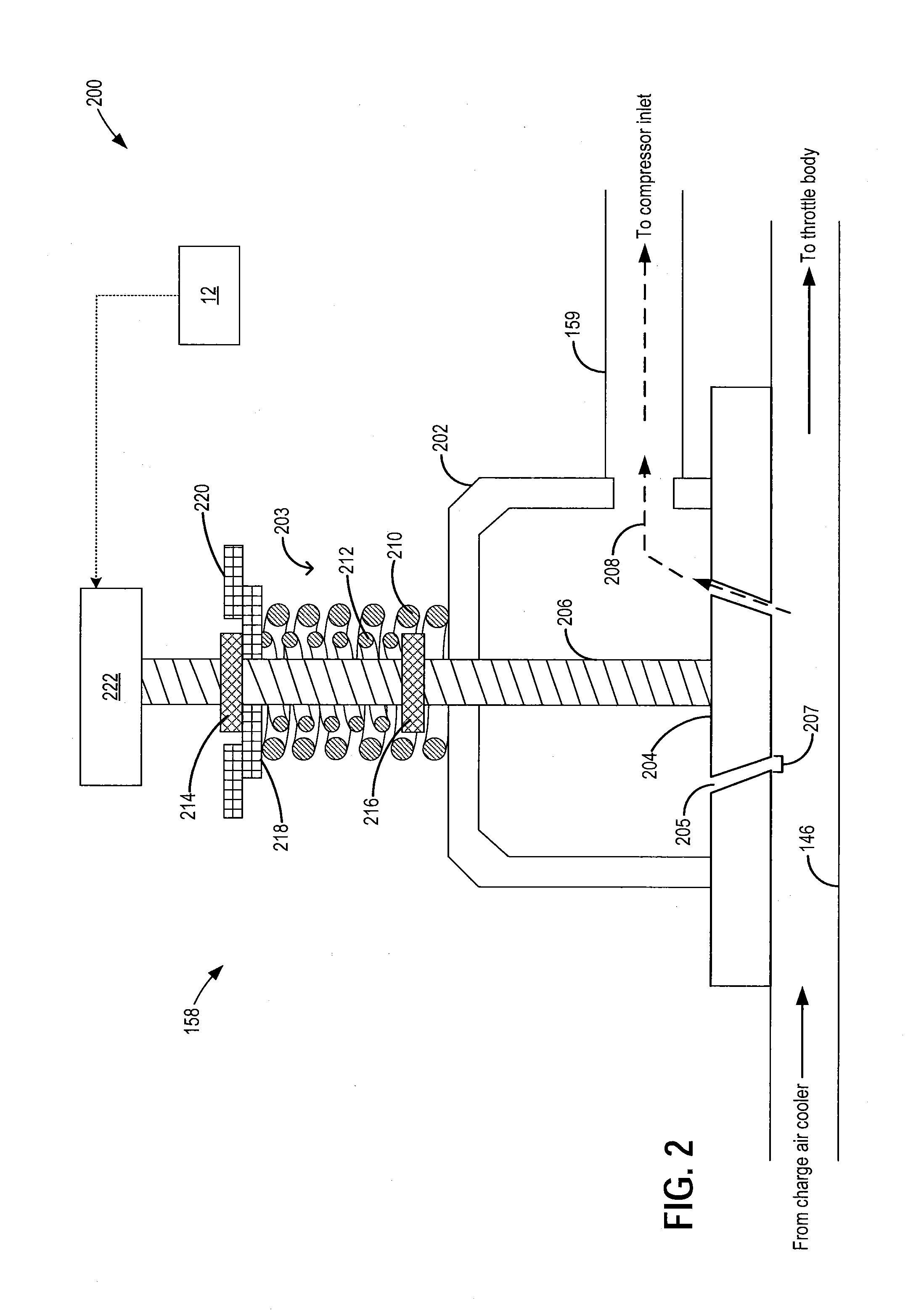Methods and systems for surge control
a surge control and surge technology, applied in the direction of engine controllers, combustion engines, machines/engines, etc., can solve the problems of compressor surge, compressor surge, compressor forward flow through, etc., to reduce forward flow through compressors, improve peak power output, and reduce the effect of compressor forward flow
- Summary
- Abstract
- Description
- Claims
- Application Information
AI Technical Summary
Benefits of technology
Problems solved by technology
Method used
Image
Examples
embodiment 200
[0032]Embodiment 200 shows CRV 158 in the default semi-open state. Valve 158 may be coupled to boost intake chamber 146 such that in the semi-open state, a portion of cooled compressed air received from downstream of the charge air cooler can be recirculated into passage 159 for delivery to the compressor inlet.
[0033]Valve 158 may include a valve stem 206, a valve head 204, and a valve body 202. Valve head 204 may be displaced, for example raised or lowered, via valve stem 206, into valve opening 205 to vary an amount of airflow 208 through the valve. A pair of stepped ridges, including an upper ridge 214 and a lower ridge 216 may be coupled to valve stem 206. A moveable retaining washer 218 may also be coupled to valve stem 206. In the default position, moveable retaining washer 218 may be held immediately below upper ridge 214. An immoveable retaining washer 220 may be arranged in line with upper ridge 214 in the default position. By raising or lowering valve head 204 within valve...
embodiment 300
[0041]As shown, when in the default semi-open position, moveable retaining washer 218 may be in direct contact with immovable retaining washer 220 such that there is no gap between the washers. As a result of this configuration, inner spring 212 is held pre-compressed between lower ridge 216 and moveable retaining washer 218, while outer spring 210 is held pre-compressed between moveable retaining washer 218 and valve body 202. This configuration is also shown at embodiment 300 of FIG. 3.
embodiment 310
[0042]Embodiment 310 of FIG. 3 shows the valve in the fully-closed position. In this state, actuator 222 is energized to apply a downward force, or push, on the valve stem 206 and head 204. As a result of the downward force, upper ridge 214 is pushed downward, which impinges on moveable retaining washer 218 and pushes it downwards. As a result of the displacement of moveable retaining washer 218, a loading and compression of outer spring 210 is increased. In particular, a compression of outer spring 210 between valve body 202 and moveable retaining washer 218 is increased. At the same time, the compression of inner spring 212 is maintained due to no change in the displacement of moveable retaining washer 218 relative to lower ridge 216. The downward displacement of washer 218 increases a gap 209 between moveable retaining washer 218 and immoveable retaining washer 220, while applying a downward force that pushes valve head 204 further into opening 205. This reduces gap 207 and holds...
PUM
 Login to View More
Login to View More Abstract
Description
Claims
Application Information
 Login to View More
Login to View More - R&D
- Intellectual Property
- Life Sciences
- Materials
- Tech Scout
- Unparalleled Data Quality
- Higher Quality Content
- 60% Fewer Hallucinations
Browse by: Latest US Patents, China's latest patents, Technical Efficacy Thesaurus, Application Domain, Technology Topic, Popular Technical Reports.
© 2025 PatSnap. All rights reserved.Legal|Privacy policy|Modern Slavery Act Transparency Statement|Sitemap|About US| Contact US: help@patsnap.com



